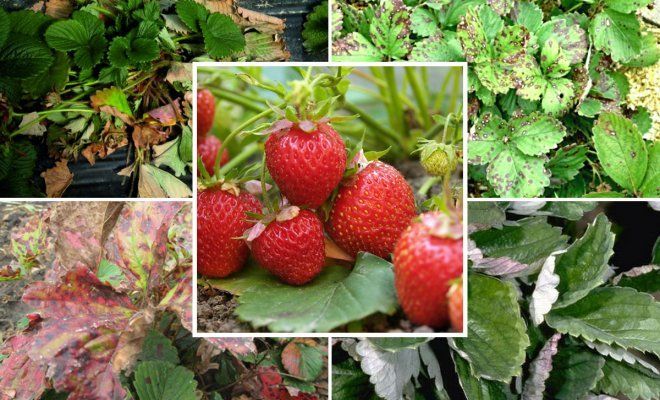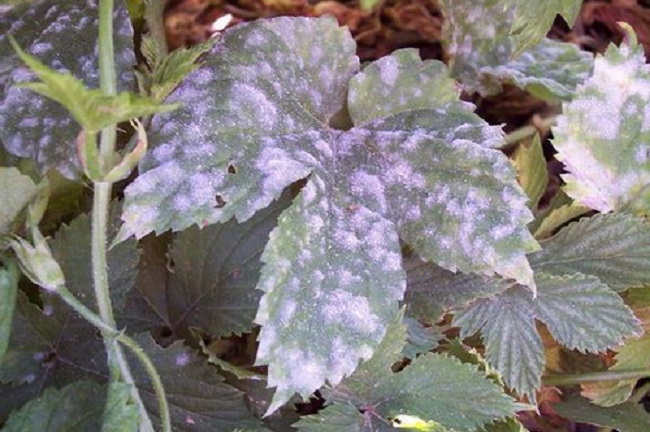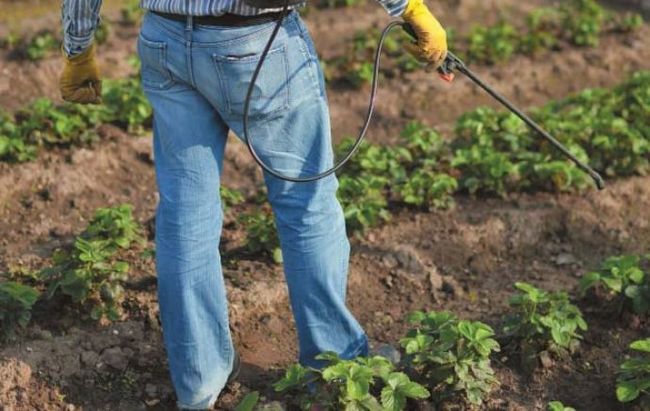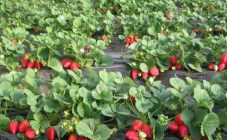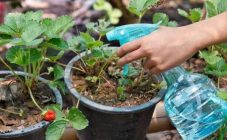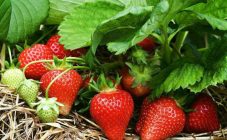It is very important for gardeners and gardeners to know what diseases of strawberries can ruin the harvest. Some problems can arise under the influence of infections, others can be a consequence of plant contact with pests. In 80% of cases, the death of strawberries or a decrease in yield are associated with the effect of bacterial rot or fungi. Diseases of garden strawberries of various intensity and the fight against them are a subject for long-term study, but the time spent will allow you to get bountiful harvests of tasty berries.
About diseases of culture
Viral diseases of strawberries of various varieties are manifested pronounced and acute. The peculiarity is that a large plantation can die in 2-4 days. If the effect of viruses on plants is detected, then it will take a long period to eliminate the consequences (you need to replace the soil or get rid of the virus) before replanting the bushes in their original place. If you do not take measures, then strawberries and strawberry plantings will die quickly, and fruiting will stop.
If a white bloom with dark inclusions forms on the berries, then in most cases treatment for white rot is required. The main cause of the problem is excess moisture combined with a lack of solar heat. The first manifestation is that the leaves become lighter than usual. A characteristic white bloom appears on the leaves and berries, followed by rot, which leads to loss of yield and death of the plant if remedial action is not taken soon.
Warm and humid weather, which lasts for a long time, is dangerous for strawberries. In this case, gardeners may encounter damage to the plant and fruit with gray rot. If the plantings are too dense, then up to 60% of their total number may die.
The reasons for the development of the disease:
- uncleared weeds;
- last year's leaves;
- damaged berries.
Gray rot manifests itself as follows:
- formed or ripe berries are covered with a bloom (gray, dark or brown);
- the fruits dry up;
- the strawberry leaf suffers: it becomes brown or gray (spots).
Root rot is a disease that occurs due to damage to young roots. Feature - it is very difficult to track it, since changes occur in the underground part of the plant, they appear as a small spot. Only then all the roots begin to hurt.
Damage reaches the outlet, the rhizome becomes red or brown. It also has constrictions and fragility. Productivity is significantly reduced, bushes and berries do not develop. Root rot infection is active throughout the growing season of the plant.
A disease such as powdery mildew on garden strawberries is often manifested. In this case, the causative agent is a fungus that damages the leaves, fruits and heart of the strawberry bush.
Symptoms that indicate the onset of the disease:
- a spot appears on the lower parts of the leaf, then several (it looks like white dust);
- leaves become thick, wrinkled;
- even young strawberries do not pour berries, new ovaries do not appear;
- the formed ovaries acquire a brown tint and dry out;
- a characteristic bloom of white dust appears on the berries.
The color of ripe fruits changes - they turn gray, the process of decay develops.Brown spots appear on the strawberry tendrils, which cause the mustache to die off.
Anthracnose in strawberries, or the appearance of black spots, is a disease that manifests itself after exposure to a fungus. A feature that must be taken into account is that the disease affects the entire plant as a whole, and not just certain parts of it. Roots, leaves, ovaries and berries suffer. Factors contributing to development: rainy weather, warm spring and summer. This fungus is resistant to many chemical elements that are used for plant protection. This is why it is difficult to treat damaged strawberries. Not every popular method will cope with the task at hand. A fungus can appear if the plant comes into contact with infected seedlings, soil or poorly rinsed garden tools.
The development of the disease is indicated by brown plaque or spots that appear on the green parts. In this case, the strawberry leaves look like burnt, quickly crack and tear from a light touch. It should be borne in mind that the affected leaf does not die off, but remains on the bush, contributing to the further development of the disease. Under the influence of the fungus, dark lesions with a light center are formed on the shoots - the shoots completely die off. Also, strawberries gradually fall off flower stalks.
On the roots, anthracnose provokes the appearance of root rot. If there are ripe berries, then depressed spots are formed on them, which have a dark shade, over time the berry dries up completely.
Another type of rot is late blight of strawberry bushes. The ovaries suffer, dark spots appear on them, the berries begin to rot, become covered with dark spots and dry out. Withering of strawberries is observed even if treatment and prevention were carried out during the season.
Methods of treatment, prevention
Existing diseases of strawberries can be prevented or reduced in severity by using methods of prevention or treatment of affected bushes. Treatment to be applied:
- removal of affected bushes (to stop the spread of the disease);
- spraying (the product is selected based on what is the main reason);
- fertilization with phosphorus and potassium in the composition, as this will make the plants resistant to diseases in the future.
Preventive measures:
- timely weeding;
- elimination of damaged bushes, berries or leaves;
- compliance with the distance between the bushes (about 25 cm);
- fertilizing the soil;
- spraying against pests.
You also need to remember that the soil should be moderately moist - it cannot be waterlogged, since many types of fungi and bacteria are very fond of high levels of moisture. The choice of treatment method and preventive effect depends on the disease or variety used, since each of them, to one degree or another, has resistance to diseases and pests.
Strawberry pests
At each stage of development of the bushes, you will need to treat them from pests.
Habitual garden crops can be spoiled by the following insects:
- weevil - a small beetle that hibernates under fallen leaves;
- aphid - damages leaves and flowers, buds cannot form, yield decreases;
- mites (spider and strawberry) - damage the leaves, the amount of nutrients supplied to the plant decreases, since pests feed on juice;
- strawberry leaf beetle - damages the leaves, the vein of each of them has characteristic bites, just like the plate, the berries become small, since the pest does not allow them to ripen;
- nematode is a small insect that damages leaves, which slows down the rate of development of the bush;
- whitefly - damages the leaves, they curl, yellow spots form on the surface;
- Medvedka - damages the root system, as a result, the bushes wither, yield indicators fall.
May beetle and slug larvae have a negative effect on plants, they damage the root system of plantings. That is why it is very important to remove them if insects are seen on bushes or berries. All diseases and pests of strawberries are eliminated with special compositions, timely agrotechnical measures. It is necessary to carry out processing and feeding at least 2 times a year: in the spring before planting and after collecting the last harvest in the season.
If rust or stains appear on the strawberries, how to deal with the problem - remove the affected plantings, treat with chemicals and organic substances. When the foliage begins to fall, it is recommended to eliminate it, since pests can wait out the winter under the leaves.
The first thing that needs to be done is to remove those specimens that are already damaged, since they are spreading diseases or pests. The most common problems from which you need to protect strawberries in advance are late blight and various types of rot. Formulations and fertilizers have a description indicating which problems spraying or application to fertile soil can protect against.
